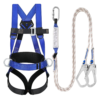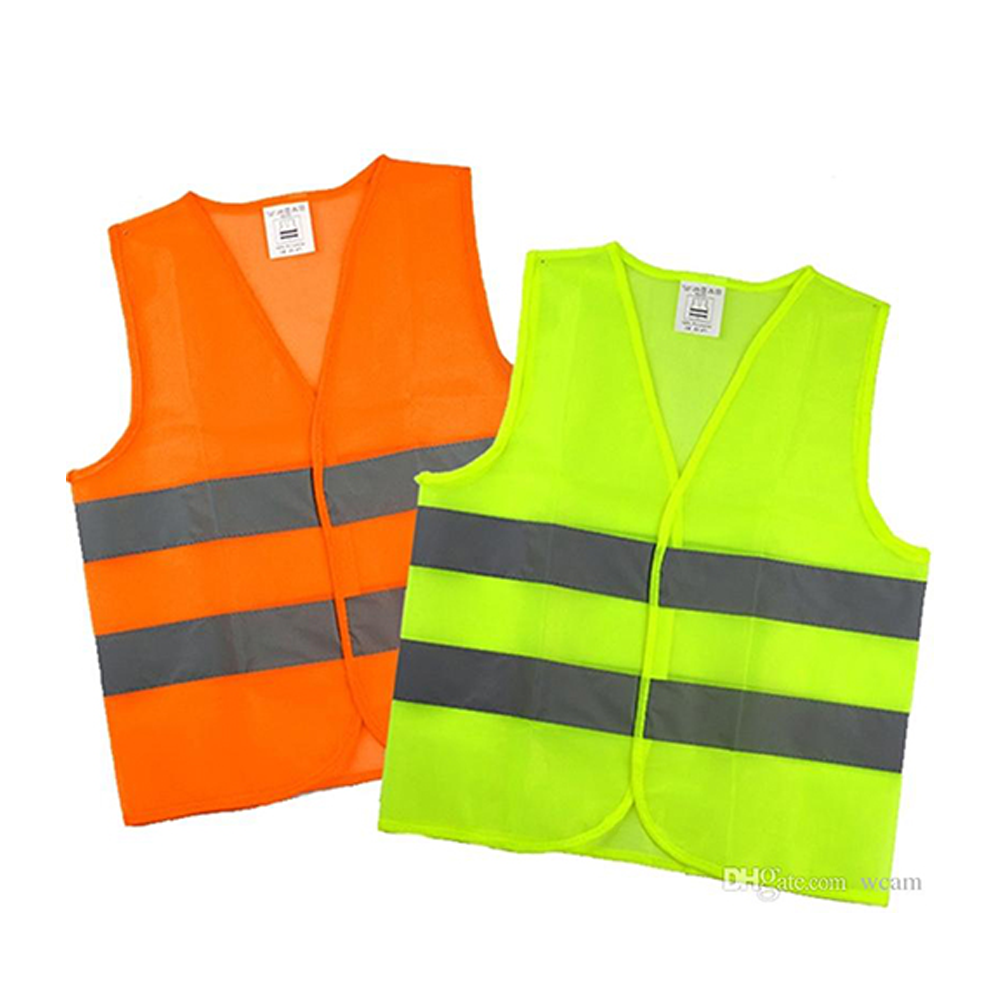🚚 Fast Delivery | ⭐ Best Quality | 📞 24/7 Support
+971 2 552 3918
info@coolwaybm.com
- Power Tools & Machinery
- Fire and Safety Equipement
Fire and Safety Equipement
- Adhesives
- Plumbing & Sanitary
- Packing Materials
Packing Materials
- Abrasives
- Carpentry
- Welding Accessories
Welding Accessories
- Fasteners
- Lock & Furniture Accessories
Lock & Furniture Accessories
- A/C Refrigeration
- Electrical
Electrical
د.إ1.00


د.إ1.00
You can add any HTML here
We suggest you to create a Saved Template in Dashboard -> Templates -> Saved Templates and use it by switching content type above to Saved template.
A safety jacket is a piece of personal protective equipment (PPE) designed to enhance the visibility of workers in environments where visibility is a concern, such as construction sites, roadwork zones, or emergency response situations. These jackets are essential for ensuring that workers are seen by others, especially in low-light conditions or high-risk environments, to reduce the likelihood of accidents or injuries.
The typical design of a safety jacket includes bright, fluorescent colors (like yellow, orange, or lime green) to ensure high visibility. Reflective strips or patches are often added to the jacket for enhanced visibility, especially at night or in dimly lit areas. The reflective strips are typically made of a high-visibility material that reflects light, making the wearer visible to oncoming vehicles or machinery from a distance.
This fabric is often made from polyester or nylon, which is both durable and lightweight, providing comfort for long hours of wear. The fluorescent color helps increase visibility in daylight or low-light conditions.
: Strategically placed around the jacket, reflective strips are designed to reflect light back to its source, ensuring that the wearer is visible in dark or nighttime conditions.
Most safety jackets feature a front closure system, such as a zipper or Velcro, that allows for easy on and off while ensuring the jacket fits snugly.
Many safety jackets include functional pockets for carrying small tools, documents, or other items, providing both convenience and utility.
Some jackets feature adjustable cuffs or waistbands to provide a more comfortable and secure fit for the wearer.
Materials used in the construction of safety jackets are chosen for durability and comfort. Polyester is a common material because it is strong, lightweight, and resistant to wear and tear. Some jackets may also have a water-resistant or windproof coating to provide additional protection in inclement weather. The reflective material on the jacket typically meets safety standards, such as those set by the ANSI (American National Standards Institute) or EN 20471 for high-visibility clothing.
Safety jackets are commonly used in industries like construction, road maintenance, emergency services, warehousing, and airport ground services. They are also worn by pedestrians, cyclists, or motorists in high-traffic areas to ensure visibility. In construction or road work environments, workers wearing safety jackets are more easily seen by vehicles and machinery operators, reducing the risk of accidents or collisions. These jackets are also a crucial part of a larger safety program to ensure that workers are protected while working in potentially dangerous conditions.
The advantages of wearing a safety jacket include improved visibility, which is essential in preventing accidents in environments where machinery, vehicles, or other hazards are present. Wearing a safety jacket helps ensure that workers can be seen from a distance, even in poor lighting or at night, which is crucial for their safety and well-being. Additionally, safety jackets are relatively lightweight and comfortable, making them suitable for all-day wear.
In summary, a safety jacket is an essential item for enhancing worker visibility in high-risk environments. Its design, which combines bright fluorescent colors with reflective strips, ensures that workers are easily seen, especially in low-light or high-traffic areas. The use of safety jackets plays a critical role in reducing the risk of accidents, protecting workers, and ensuring compliance with safety regulations.
There is £4.99 charge for delivery under £50 Orders. Additional charges will be imposed by our couriers for delivery to remote area, a surcharge may be levied to cover carriage to these areas.
Safety Jacket
د.إ1.00
- Provides visibility and protection in hazardous work environments.
- Commonly used by workers in construction, road work, and emergency services.
- Made from fluorescent or reflective material to enhance visibility, often with a zipper or Velcro closure.
- Typically made from lightweight, durable fabrics like polyester or nylon, with reflective strips for added safety.
- Improves visibility in low-light or high-risk areas, ensuring the wearer’s safety by making them easily seen by others.
A safety jacket is a piece of personal protective equipment (PPE) designed to enhance the visibility of workers in environments where visibility is a concern, such as construction sites, roadwork zones, or emergency response situations. These jackets are essential for ensuring that workers are seen by others, especially in low-light conditions or high-risk environments, to reduce the likelihood of accidents or injuries.
The typical design of a safety jacket includes bright, fluorescent colors (like yellow, orange, or lime green) to ensure high visibility. Reflective strips or patches are often added to the jacket for enhanced visibility, especially at night or in dimly lit areas. The reflective strips are typically made of a high-visibility material that reflects light, making the wearer visible to oncoming vehicles or machinery from a distance.
This fabric is often made from polyester or nylon, which is both durable and lightweight, providing comfort for long hours of wear. The fluorescent color helps increase visibility in daylight or low-light conditions.
: Strategically placed around the jacket, reflective strips are designed to reflect light back to its source, ensuring that the wearer is visible in dark or nighttime conditions.
Most safety jackets feature a front closure system, such as a zipper or Velcro, that allows for easy on and off while ensuring the jacket fits snugly.
Many safety jackets include functional pockets for carrying small tools, documents, or other items, providing both convenience and utility.
Some jackets feature adjustable cuffs or waistbands to provide a more comfortable and secure fit for the wearer.
Materials used in the construction of safety jackets are chosen for durability and comfort. Polyester is a common material because it is strong, lightweight, and resistant to wear and tear. Some jackets may also have a water-resistant or windproof coating to provide additional protection in inclement weather. The reflective material on the jacket typically meets safety standards, such as those set by the ANSI (American National Standards Institute) or EN 20471 for high-visibility clothing.
Safety jackets are commonly used in industries like construction, road maintenance, emergency services, warehousing, and airport ground services. They are also worn by pedestrians, cyclists, or motorists in high-traffic areas to ensure visibility. In construction or road work environments, workers wearing safety jackets are more easily seen by vehicles and machinery operators, reducing the risk of accidents or collisions. These jackets are also a crucial part of a larger safety program to ensure that workers are protected while working in potentially dangerous conditions.
The advantages of wearing a safety jacket include improved visibility, which is essential in preventing accidents in environments where machinery, vehicles, or other hazards are present. Wearing a safety jacket helps ensure that workers can be seen from a distance, even in poor lighting or at night, which is crucial for their safety and well-being. Additionally, safety jackets are relatively lightweight and comfortable, making them suitable for all-day wear.
In summary, a safety jacket is an essential item for enhancing worker visibility in high-risk environments. Its design, which combines bright fluorescent colors with reflective strips, ensures that workers are easily seen, especially in low-light or high-traffic areas. The use of safety jackets plays a critical role in reducing the risk of accidents, protecting workers, and ensuring compliance with safety regulations.
There is £4.99 charge for delivery under £50 Orders. Additional charges will be imposed by our couriers for delivery to remote area, a surcharge may be levied to cover carriage to these areas.
Reviews
There are no reviews yet.
Buy more save more!
Buy from 2 to 4 items and get 10% OFF
on each productBuy from 5 to 8 items and get 15% OFF
on each product- Free shipping on all orders above 50,00
- No hassle returns, 30 days return
- Next day delivery within your country










Reviews
There are no reviews yet.